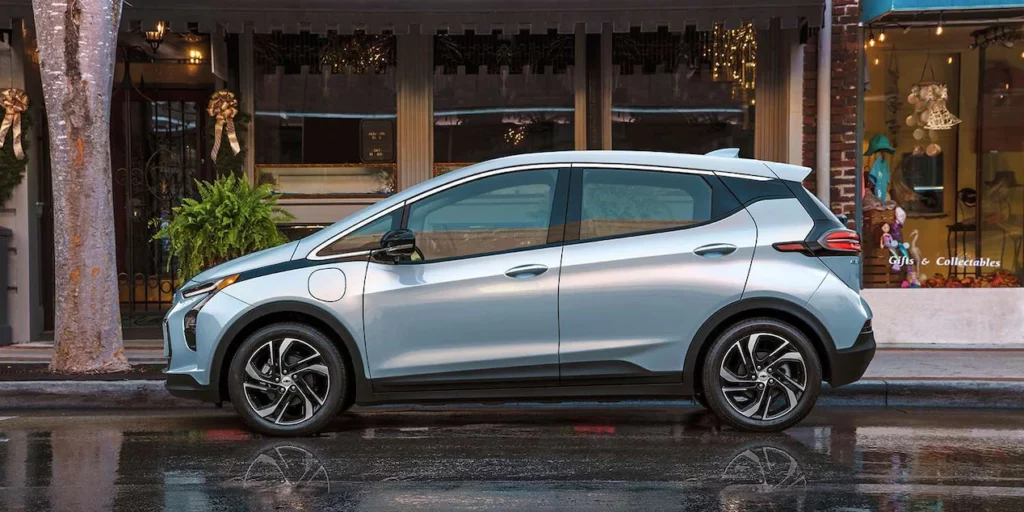In the current landscape of modern business, effective fleet management plays a pivotal role in optimizing operations and driving success. For businesses with large fleets, the process of vehicle acquisition takes center stage as a critical aspect of their overall strategy. Selecting the right vehicles, negotiating favorable deals, and implementing sustainable practices can significantly impact a company’s bottom line and operational efficiency.
In this comprehensive guide, we delve into the world of vehicle acquisition strategies for fleet managers. We will explore the key considerations, best practices, and emerging trends in the realm of fleet procurement. Whether you’re a seasoned fleet manager looking to refine your approach or a new entrant seeking expert insights, this blog post will serve as your go-to resource for navigating the complexities of acquiring and maintaining a successful fleet.
Understanding the Importance of Vehicle Acquisition
Vehicle acquisition refers to the process of acquiring new vehicles for a business’s operational needs. It is a crucial decision for businesses as it directly impacts their day-to-day operations, productivity, and overall efficiency. Whether it’s a fleet of delivery trucks, service vehicles, or executive cars, the right choice in the vehicle acquisition process can lead to cost savings, improved performance, and a positive brand image.
Things to consider
When planning for vehicle acquisition, businesses must carefully consider several factors to make an informed decision. First and foremost, the type of fleet vehicle needed for the specific business purpose should be determined. For instance, a logistics company might require sturdy trucks with ample cargo space, while a tech firm might opt for more fuel-efficient compact cars for its sales team. Considering new or used vehicles can benefit certain industries, but fleet managers must factor in the vehicle maintenance. Understanding the exact requirements helps in choosing the most suitable vehicle type.
Another crucial consideration is the fuel type, with traditional and electric options available. When considering vehicle selection, traditional fuel vehicles, such as gasoline or diesel, have been widely used. The rising concern over environmental sustainability and fluctuating fuel prices has made electric vehicles (EVs) an attractive alternative. EVs offer reduced carbon emissions and potential long-term cost savings on fuel and maintenance.
Financing options also play a significant role in the decision-making process. Businesses can consider vehicle purchases outright, lease them, or explore financing options through loans or leasing agreements. Each option has its pros and cons, and the choice should align with the business’s financial goals and capabilities. Leasing might provide more flexibility, while ownership could be more cost-effective in the long run.
Total cost of ownership (TCO) is a crucial metric that businesses should calculate when considering vehicle acquisition. TCO encompasses not just the initial purchase price but also ongoing expenses like fuel, maintenance, insurance, and potential depreciation. While electric vehicles often have higher upfront costs, their lower operating and maintenance costs can result in a more favorable TCO over the vehicle’s lifetime. Thoroughly analyzing TCO helps businesses make well-informed decisions that align with their budget and financial objectives.
The vehicle acquisition strategy is a pivotal process for businesses that heavily relies on transportation. By carefully considering factors like the type of vehicle, fuel type, financing options, and total cost of ownership, businesses can make optimal decisions that positively impact their bottom line, environmental footprint, and overall operational efficiency. A well-chosen fleet can lead to enhanced productivity and an improved brand reputation, making it an essential strategic choice for any forward-thinking business.
Different Methods of Vehicle Acquisition
Vehicle acquisition refers to the process of obtaining vehicles for a company’s fleet to support its operational needs. Whether a business manages a small fleet or a large one, making informed decisions about acquiring vehicles is crucial to ensure cost-effectiveness, operational efficiency, and environmental sustainability.
For businesses heavily reliant on transportation, such as logistics, delivery services, or field operations, the vehicles they choose to acquire can significantly impact their daily operations and overall bottom line. A well-planned vehicle acquisition strategy takes into account various factors to optimize fleet performance, minimize operating costs, and align with the company’s sustainability goals.
Factors to Consider in Vehicle Acquisition:
Outright Purchasing
Outright vehicle purchasing is the traditional and straightforward method of acquiring a vehicle. In this method, the buyer pays the full cost of the vehicle upfront or secures financing through a loan, which is later paid off in installments.
Pros:
- Ownership: Once the purchase order is complete, you become the outright owner of the vehicle. You have the freedom to customize it, drive as much as you want, and sell it whenever you please.
- No Mileage Limitations: Unlike leasing, there are no mileage restrictions. You can drive the vehicle without worrying about exceeding any specified limits.
- Long-term Savings: While the upfront cost may be higher, you save money in the long run by avoiding lease payments and interest charges.
Cons:
- High Initial Cost: Purchasing a vehicle requires a significant upfront investment, which might be challenging for some buyers.
- Depreciation: Vehicles typically depreciate over time, and when you eventually decide to sell, its value may have significantly decreased.
- Maintenance Costs: As the owner, you are responsible for all maintenance and repair expenses, which can be substantial over the vehicle’s lifespan.
Leasing
Vehicle leasing has gained popularity in recent years, offering an alternative to traditional ownership. In a lease agreement, the lessee makes regular payments to use the vehicle for a fixed period, typically two to four years.
Pros:
- Lower Initial Cost: EV fleet leasing generally requires a lower down payment and lower monthly payments than outright purchasing, making it more accessible for some consumers.
- Warranty Coverage: The vehicle is typically under warranty for the duration of the lease, which can help save on maintenance costs.
- Regular Upgrades: Leasing allows you to drive new models more frequently, keeping you updated with the latest features and safety technologies.
Cons:
- Mileage Restrictions: Lease agreements often impose mileage limits, and exceeding them can result in additional charges.
- No Ownership: You don’t own the vehicle, and at the end of the lease term, you must return it, leaving you without any equity in the car.
- Penalties for Damage: Lessees are responsible for any excessive wear and tear on the vehicle, which may incur additional costs when returning the car.
Spring Free EV’s Mileage Purchase Agreement is an innovative solution that aims to combine the benefits of outright purchasing and leasing, with a unique twist on ownership.
The Mileage Purchase Agreement allows customers to pay for the vehicle based on the mileage driven, rather than a fixed purchase price or lease duration. Similar to leasing, this method may require a lower upfront cost, making it more accessible to a broader range of customers.
Why Electric Vehicles Are the Future of Fleet
As society embraces sustainable practices and industries seek to reduce their carbon footprint, the adoption of EVs in fleet management is gaining momentum. Although there are potential drawbacks that need to be overcome, such as upfront costs, range anxiety, and charging infrastructure, EVs continue to be an attractive vehicle option.
One of the most compelling reasons for the increasing popularity of EVs in fleet management is their significant environmental impact. As the world grapples with climate change and strives to reduce greenhouse gas emissions, the transportation sector is a primary target for transformation. EVs produce zero tailpipe emissions, making them a cleaner alternative to traditional internal combustion engine vehicles. By adopting electric vehicles in fleets, companies can actively contribute to sustainability goals, reduce their carbon footprint, and demonstrate corporate responsibility, aligning with the expectations of environmentally-conscious consumers and investors.
Electric vehicles offer substantial cost savings over their conventional counterparts, making them an attractive option for fleet management. Electricity is generally cheaper than gasoline or diesel, resulting in lower fuel expenses. EVs also have fewer moving parts and simpler drivetrains, leading to reduced maintenance requirements. With fewer oil changes, no exhaust systems to replace, and regenerative braking systems that extend brake life, fleet operators can enjoy considerable operational cost benefits in the long term.
Adopting electric vehicles in fleets not only provides cost savings and environmental benefits but also enhances a company’s public perception and brand image. Embracing sustainability initiatives is increasingly valued by consumers and investors alike, with many favoring businesses that demonstrate environmental consciousness. Companies with electric fleets are seen as innovative, forward-thinking, and socially responsible, which can lead to enhanced brand loyalty and a competitive edge in the market.
One of the primary challenges to widespread EV adoption in fleet management is the higher upfront costs of electric vehicles compared to conventional vehicles. EV technology and manufacturing processes are continually evolving, but initial purchase prices can still present a financial barrier for some fleet operators. However, it is essential to consider the long-term savings from lower fuel and maintenance costs, which can offset the initial investment over time.
Range anxiety, the fear of running out of battery power before reaching a charging station, is a legitimate concern for fleet managers. While the range of electric vehicles has improved significantly in recent years, it is crucial to plan routes carefully and ensure access to a well-developed charging infrastructure. As battery technology continues to advance, and more fast-charging stations become available, range anxiety will gradually diminish.
A robust charging infrastructure is critical for the successful integration of electric vehicles in fleet management. Fleet operators need reliable and conveniently located charging stations to support their daily operations effectively. While progress has been made in expanding charging networks, especially in urban areas, further development is necessary to meet the growing demand for EVs in fleets.
What Works for Your Business?
Electric vehicles are undeniably the future of fleet management, driven by their positive environmental impact, lower operating costs, and improved public perception. Fleet operators worldwide are recognizing the potential of EVs to revolutionize their operations while contributing to a sustainable future. Though upfront costs, range anxiety, and charging infrastructure pose challenges, ongoing technological advancements and concerted efforts by governments and private sectors are addressing these drawbacks. As the EV landscape continues to evolve, embracing electric vehicles in fleet management will not only be a prudent financial decision but also a pivotal step toward a greener and more sustainable future.

